Bid Award Letter Template for Successful Contract Awards
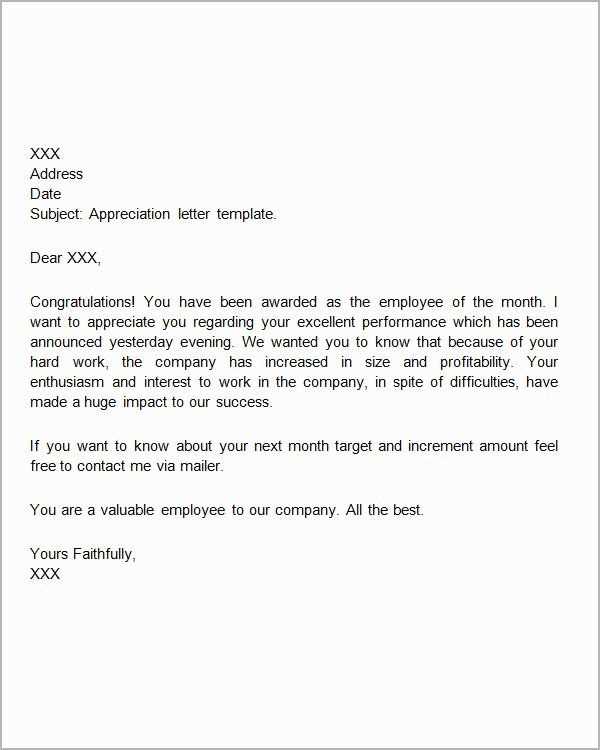
In any competitive process, clearly communicating the selection of the successful candidate is essential. Properly notifying the individual or organization chosen for the project ensures transparency and sets the tone for the next steps. The communication must be professional, clear, and legally sound to avoid misunderstandings and promote positive business relationships.
Crafting such a message involves more than just informing the recipient; it’s about confirming their selection, outlining the terms of the agreement, and establishing a foundation for future collaboration. A well-structured notification serves both as a formal acknowledgment and a starting point for negotiations or contract signing.
By understanding the key components of such a communication, you can ensure that the process runs smoothly and reflects your professionalism. Whether you’re notifying a contractor, vendor, or service provider, the approach remains the same: clear, respectful, and concise communication is crucial.
Bid Award Letter Template Overview
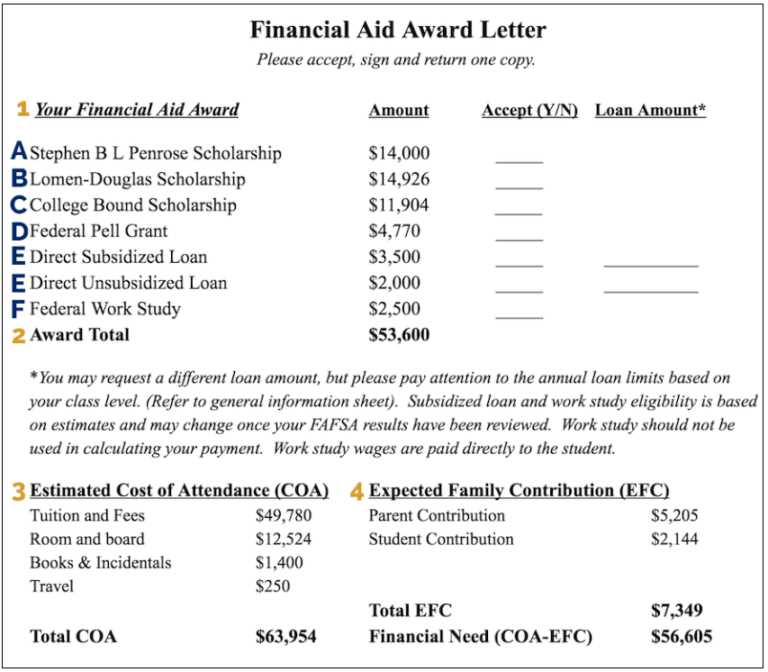
When a decision has been made to proceed with a particular offer, it’s essential to communicate this formally and professionally. This message serves as a confirmation that the recipient has been selected for the project and includes the necessary details for moving forward. It is important that the communication is both clear and respectful, establishing the next steps in the process.
The content of this communication typically includes a formal acknowledgment of the recipient’s success, a brief outline of the agreement terms, and instructions on what needs to happen next. A well-structured message can also express appreciation for the recipient’s efforts, setting a positive tone for future collaboration.
Understanding the basic structure of such a document can help ensure consistency and professionalism in your communications. Each element, from the introduction to the closing, plays a role in confirming the selection and guiding the recipient toward the next phase of the process.
Key Elements to Include in Your Letter
When crafting a formal communication to notify a selected candidate, several essential components must be included to ensure clarity and professionalism. These elements ensure the recipient understands their success, the terms of the agreement, and the next steps in the process.
The first crucial element is a clear statement of the selection, specifying that the recipient has been chosen and for what purpose. Following this, the terms of the agreement or project should be briefly outlined, including key dates, responsibilities, and expectations. This ensures both parties are aligned from the start.
Additionally, it’s important to include instructions on what the recipient should do next. Whether it’s signing a contract, providing further documentation, or confirming availability, these next steps should be outlined concisely. A tone of appreciation for their effort throughout the process is also recommended, helping to build goodwill and maintain a positive professional relationship.
How to Write a Clear Bid Acceptance
Crafting a clear and direct acceptance is essential to confirm the selection and ensure the recipient understands the terms and next steps. A well-written acceptance letter should be concise yet detailed enough to avoid confusion, outlining the agreed-upon terms and any actions required moving forward.
Essential Steps in Acceptance Communication
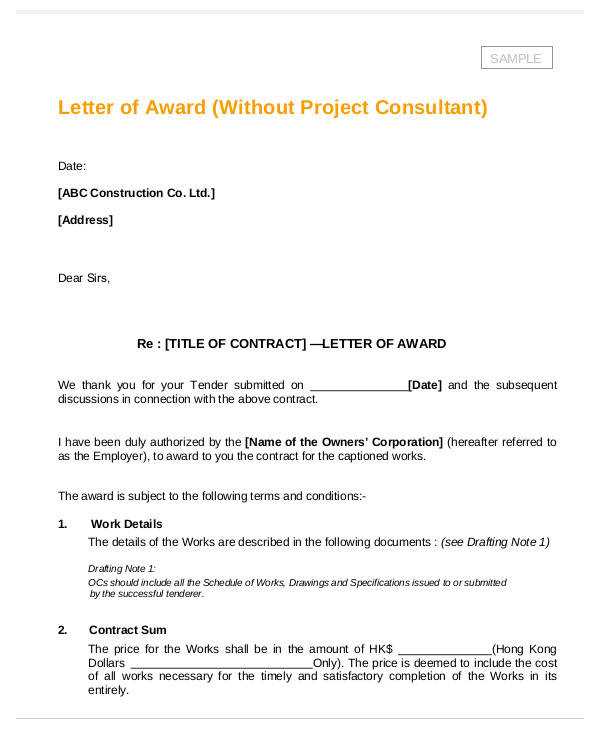
- Start with Confirmation: Begin by clearly stating that the recipient’s offer has been accepted, including any relevant details such as the scope of work or service agreed upon.
- Outline Key Terms: Summarize the critical elements of the agreement, such as deadlines, payment terms, or any special conditions that apply to the arrangement.
- Specify Next Steps: Clearly communicate what the recipient should do next–whether it’s signing an agreement, providing additional documentation, or confirming a start date.
- Express Gratitude: Conclude the message by thanking the recipient for their effort, professionalism, and commitment. This fosters positive relations for future collaboration.
Maintain Professional Tone and Clarity
Throughout the acceptance communication, ensure the tone remains professional and respectful. Avoid unnecessary jargon and keep the message focused on the essentials. A clear, precise communication will help to establish trust and set the stage for a successful working relationship.
Common Mistakes to Avoid in Award Letters
While drafting a communication to notify the recipient of their successful selection, it’s important to avoid certain common errors that can lead to confusion or misunderstandings. These mistakes can undermine the clarity and professionalism of the message, potentially jeopardizing future relationships or negotiations.
Lack of Clarity in Key Information
- Vague Terms: Always ensure that the terms of the agreement, deadlines, and expectations are clearly outlined. Ambiguities can lead to confusion and delay.
- Missing Actionable Steps: Failing to include next steps or instructions on what the recipient should do can leave them uncertain about how to proceed.
Inappropriate Tone and Language
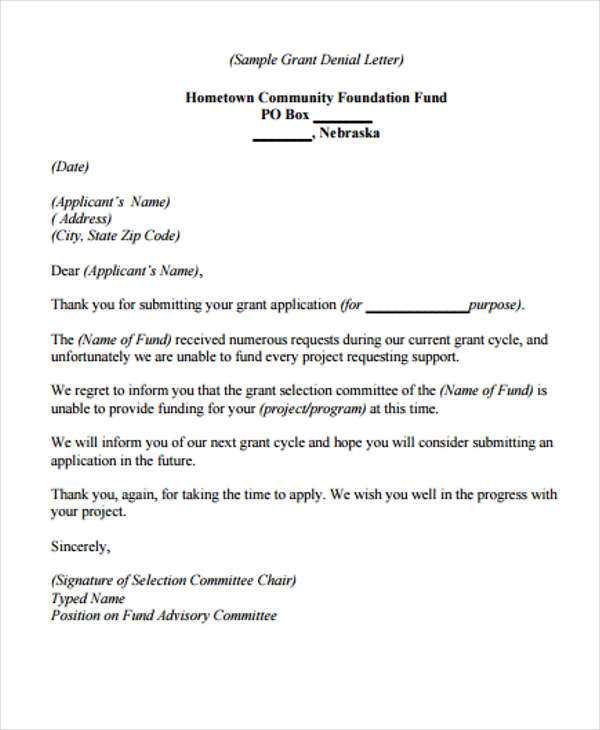
- Too Casual: While it’s important to maintain a friendly tone, being overly casual can make the communication seem unprofessional. Always strike a balance between approachability and formality.
- Excessive Formality: On the flip side, overly stiff or formal language can come across as cold or impersonal. Aim for a professional yet warm tone.
By avoiding these mistakes and focusing on clear, concise, and respectful communication, you can ensure that your message is well-received and lays the groundwork for a positive collaboration.
Best Practices for Professional Communication
When communicating important decisions, such as informing someone of their selection, it’s crucial to maintain a level of professionalism that ensures clarity and promotes a positive relationship. By following best practices, you can enhance the effectiveness of your message and avoid misunderstandings.
Key Guidelines for Effective Communication
- Be Clear and Direct: Avoid ambiguous language and get straight to the point. Clearly state the purpose of the communication and provide all necessary details in a concise manner.
- Maintain a Professional Tone: Ensure your language is courteous and respectful. Avoid overly casual phrasing while still keeping the tone approachable.
- Use Proper Structure: Organize your message logically. Start with a clear introduction, follow with the main content, and conclude with actionable steps or expectations.
- Proofread for Accuracy: Before sending, review your message for any spelling, grammatical, or factual errors. A well-polished communication reflects professionalism.
Consider the Recipient’s Perspective
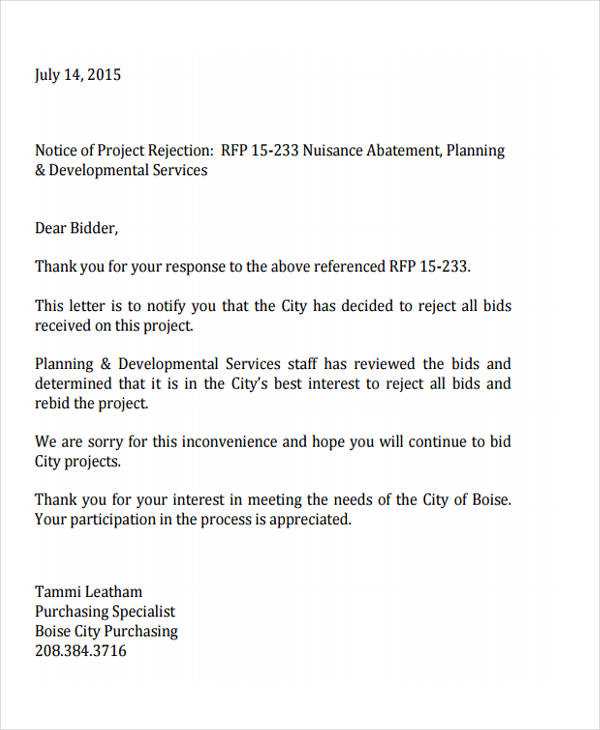
- Be Mindful of Tone: While maintaining professionalism, ensure that the tone is not too harsh or overly formal. Striking the right balance creates a positive impression.
- Be Empathetic: Acknowledge the effort the recipient has put into the process. A simple note of appreciation can go a long way in fostering goodwill.
By adhering to these best practices, you not only convey your message effectively but also build and maintain strong professional relationships with your recipients.
Customizing Your Letter for Different Bids
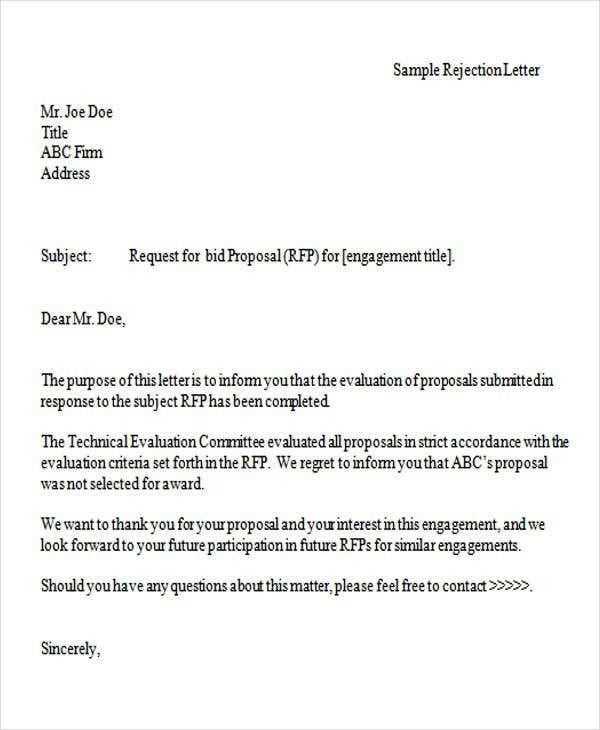
When crafting a communication to inform recipients of their selection, it’s essential to tailor the message to the specific context of each situation. Personalizing the content ensures that all relevant details are conveyed appropriately and helps to establish a professional relationship.
The customization process depends on the nature of the project or offer. Different opportunities may require emphasizing distinct aspects of the agreement, such as timelines, resources, or expectations. Tailoring your message also allows you to reflect the unique nature of the recipient’s proposal, making the communication feel more personal and relevant.
| Project Type | Key Focus | Customization Tips |
|---|---|---|
| Long-term Contracts | Emphasize ongoing responsibilities, deadlines, and long-term collaboration. | Include detailed project milestones and performance expectations. |
| One-time Projects | Highlight specific deliverables and timelines. | Be clear about completion dates and payment structure. |
| Service Agreements | Focus on the quality of service, scope, and terms of engagement. | Clearly outline the scope of work and service expectations. |
By adjusting the language and content according to the specific nature of the offer or service, you can ensure the communication is clear, professional, and aligned with the expectations of both parties.
Legal Considerations in Bid Award Letters
When drafting a communication to confirm the selection of a recipient, it’s crucial to be mindful of the legal implications. The language used, the terms outlined, and the structure of the message can have significant legal consequences. Ensuring that the document is clear, precise, and legally sound helps prevent potential disputes and misunderstandings in the future.
Contractual Obligations
One of the most important aspects to consider is that the communication may be viewed as a legal agreement. By notifying someone of their selection, you may be setting the stage for a formal contract. Ensure that the terms outlined, such as scope of work, payment schedules, and deliverables, are consistent with previously discussed agreements. Be sure to clarify any conditions that need to be met before the final contract is signed.
Compliance with Laws and Regulations
It’s also essential to ensure that the content complies with relevant laws and regulations. Different jurisdictions have specific rules related to contract formation, communication standards, and disclosure requirements. Review all applicable laws before sending any confirmation communication to ensure full compliance.
By taking these legal considerations into account, you ensure that your message not only reflects professionalism but also avoids potential legal issues in the future.